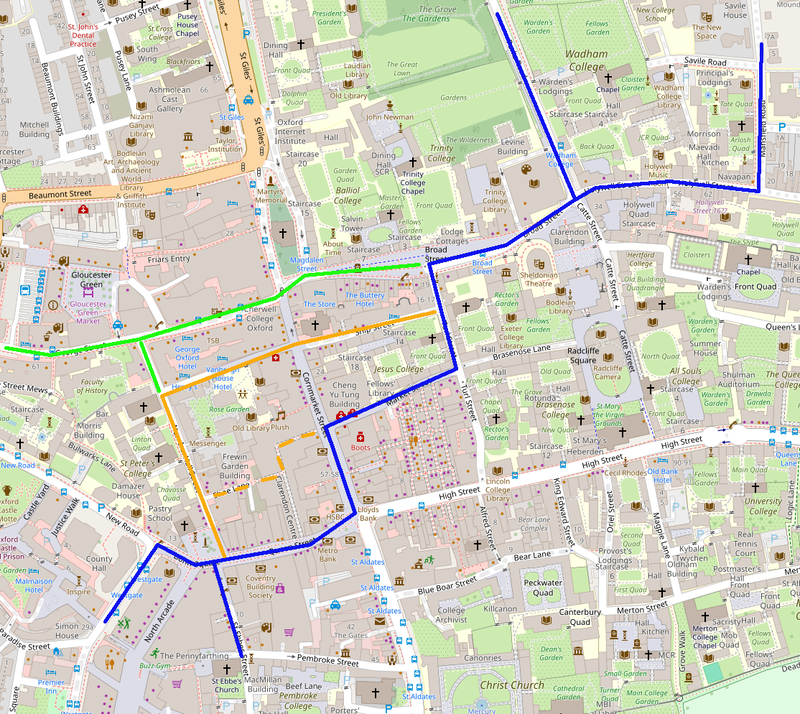In 1999, the council blocked cycling (in the middle of the day) on Cornmarket and the eastern end of Queen St; in 2017, with the redevelopment of the Westgate Centre, cycling was blocked at the same hours on Turn Again Lane; and then in 2022 cycling was blocked at the eastern end of St Michaels St. And now the county seems likely to ban cycling on a further 23 metres of Market St. This progressive removal of cycling routes has left no safe and inclusively accessible east-west cycling route through the city centre. High St and St Aldates have way too many buses, Pembroke St is unusable without a horrible dog-leg across St Aldates, and while George St is not so bad it still has too many buses, with turning movements.
Many people simply won't cycle on these routes, or let their children cycle on them. So if the councils are at all serious about enabling cycling, or about equity and inclusivity (and the Local Transport and Connectivity Plan has a goal of increasing cycling trips by 60% by 2030), then there has to be a fully accessible east-west route across the city centre. (I have previously written about the need to support inclusive cycling.) The most sensible way to achieve this is, in my opinion, to allow cycling at all times of day on Queen St and Cornmarket, but there are different options.

blue shows an accessible east-west cycling route; orange the alternative route using St Michaels St and Ship St; green a route on George St; and dashed orange a route through what was the Clarendon Centre
more
Delft has a city centre which is very largely de-motorised. As a result it is a lovely place to walk around and spend time - perhaps the most noticeable thing is just how quiet it is! The core to this seems to be a "low traffic zone" covering most of the city centre, with largely uniform restrictions. Enforcement appears to be by camera. more
This is an excellent set of ideas. We support both the broader goals of the COMPF project and the list of specific ideas, though the latter will need to be fleshed out with details before we can see how they will actually work. There are also a few areas we would have liked to have seen included that weren't.
The opportunities for improvement are huge. The public realm in the city centre is of quite poor standard, making it relatively unattractive for residents or visitors: central Cambridge is significantly nicer, to make the obvious comparison, as are the centres of York, Bath, or even Birmingham. (Though to be fair, some of those cities are significantly less pleasant than Oxford just outside the centre.)
Walking around central Oxford can be quite unpleasant: narrow, cramped footways, awkward and hostile crossings where people are almost forced to cross on red, too much motor traffic (including high bus flows in some locations), and poor separation from cycling.
There is also poor provision for cycling: most notably in the absence of accessible east-west and north-south routes through the centre, and the lack of any kind of safe, coherent and consistent cycling infrastructure along Banbury and Woodstock Rds.
more

